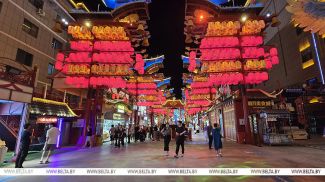WASHINGTON, 21 March (BelTA - Xinhua) - An Italian science team has developed a new class of low-cost materials that can reduce wastewater and air pollution better than the commonly-used activated carbon.
The study, published in the latest journal Frontiers in Chemistry, has reported a hybrid material that can be synthesized inexpensively from solid wastes and a naturally abundant polymer.
"This paper shows the simple synthesis of a new porous hybrid material, obtained by using low cost and by-product materials," says its lead author Elza Bontempi from the University of Brescia.
The researchers combined sodium alginate a naturally abundant raw material that can be extracted from seaweed and algae, with silica fume, a high-volume industrial by-product in silicon metal alloy processing, to produce a "green" adsorbent.
Bontempi said that the synthesis method was simple and easy to scale up. Taking advantage of the gelling properties of alginate, the researchers combined it with the decomposition of food-grade sodium-bicarbonate or baking soda to consolidate the material.
Testing of wastewater pollution was performed using methylene blue dye as a model pollutant. The hybrid material adsorbed and removed the dye, even at high concentrations, with 94 percent efficiency.
Analyses revealed that, compared with activated carbon, production of the hybrid material consumed less energy while leaving a much lower carbon footprint.
The material also demonstrated encouraging capabilities for trapping diesel exhaust fume particulate matter, according to researchers.
Both particulate matter and organic dyes are highly toxic to ecosystems and to humanity.
Activated carbon is the most common adsorbent used to reduce both atmospheric and wastewater pollution, but is expensive to produce and regenerate.
The material can be applied as a coating, used for spraying or brushing, and used for 3D-printing. This means it could be used to cover external building surfaces to remove particular matter, as well as to design water filtration units.












